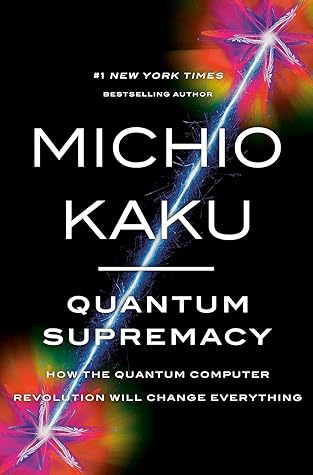More on this book
Community
Kindle Notes & Highlights
A revolution is coming. In 2019 and 2020, two bombshells rocked the world of science. Two groups announced that they had achieved quantum supremacy, the fabled point at which a radically new type of computer, called a quantum computer, could decisively outperform an ordinary digital supercomputer on specific tasks. This heralded an upheaval that can change the entire computing landscape and overturn every aspect of our daily life.
Google revealed that their Sycamore quantum computer could solve a mathematical problem in 200 seconds that would take 10,000 years on the world’s fastest supercomputer. According to MIT’s Technology Review, Google called this a major breakthrough. They likened it to the launch of Sputnik or the Wright brothers’ first flight. It was “the threshold of a new era of machines that would make today’s mightiest computer look like an abacus.”
“It is not that machines are going to replace chemists. It’s that the chemists who use machines will replace those that don’t.”
quantum computers are so powerful that, in principle, they could break all known cybercodes. This means that the secrets carefully guarded by governments, which are their crown jewels containing their most sensitive information, are vulnerable to attack, as are the best-kept secrets of corporations and even individuals. This situation is so urgent that even the U.S. National Institute of Standards and Technology (NIST), which sets national policy and standards, recently issued guidelines to help large corporations and agencies plan for the inevitable transition to this new era. NIST has
...more
The rise of quantum computers is a sign that the Age of Silicon is gradually coming to a close. For the past half-century, the explosion of computer power has been described by Moore’s law, named after Intel founder Gordon Moore. Moore’s law states that computer power doubles every eighteen months. This deceptively simple law has tracked the remarkable exponential increase in computer power, which is unprecedented in human history. There is no other invention which has had such a pervasive impact in such a brief period of time.
Today, cell phones used by children to play video games are more powerful than a roomful of those lumbering dinosaurs once used by the Pentagon. We take for granted that the computer in our pocket exceeds the power of the computers used during the Cold War.
Moore’s law is already slowing down and may eventually come to a halt. This is because microchips are so compact that the thinnest layer of transistors is about twenty atoms across. When they reach about five atoms across, the location of the electron becomes uncertain, and they can leak out and short-circuit the chip or generate so much heat that the chips melt. In other words, by the laws of physics, Moore’s law must eventually collapse if we continue to use primarily silicon. We could be witnessing the end of the Age of Silicon. The next leap might be the post-Silicon or Quantum Age.
your internet connection may be measured in terms of gigabits per second (Gbit/s), which means that one billion bits are being sent to your computer every second, giving you instant access to movies, emails, documents, etc.


